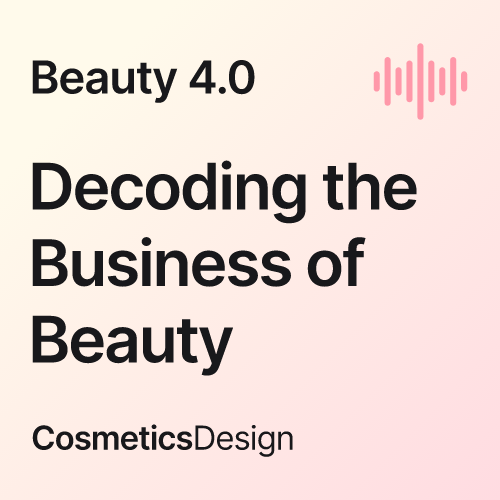All eyes on… Three emerging APAC markets to watch for cosmetic growth in 2021
![As part of our look ahead to what 2021 has in store, we shine the spotlight on three emerging markets. [Getty Images]](/var/wrbm_gb_food_pharma/storage/images/_aliases/wrbm_large/publications/cosmetics/cosmeticsdesign-asia.com/headlines/market-trends/three-emerging-apac-markets-to-watch-for-cosmetic-growth-in-2021/12037141-1-eng-GB/Three-emerging-APAC-markets-to-watch-for-cosmetic-growth-in-2021.jpg)
As part of our look ahead to what 2021 has in store, we shine the spotlight on these three markets.
China: Lower-tier cities
Last November, during the Double 11 shopping festival, e-commerce platform JD reported that the cities with the highest per capita consumption of new users were the lower-tier cities, including Yingtan, Tongchuan and Chuzhou.
“Fundamentally, it comes down to demographics. The growth rate of the rising middle class in tier three and four cities are growing much quicker and faster than tier one and two. For our industry, this is very important because there’s significant buying power over there,” said Samuel Xuereb, executive director of Toly Asia.
Aside from the sheer size of the population, the change and growth of these cities in the last five years have been driven by e-commerce.
“If you look at the establish prestige brands, they may not have been able to have a physical presence in the third or fourth-tier cities because of the lack of infrastructure – in this case, a nice shiny shopping centre – and e-commerce allowed them to reach these consumers,” said Xuereb.
Meanwhile, the lack of competition in the lower-tier cities resulted in the proliferation of domestic brands.
“At the same time, you got the Gen Z consumers who may not be able to afford a Western product. So local Chinese brands have provided them with an alternative to start experimenting with beauty products,” said Xuereb.
One such brand is Proya, a Chinese cosmetics company founded in 2006 which built its success by tapping into these less crowded markets.
“Proya went in for tier three and four cities. That is a classic example of a homegrown brand which did not just rely on the Internet for its growth. That was their strategy; they knew they couldn't compete with the international brands [in the upper-tier cities], so they opened up in these markets,” said Xuereb.
Moving forward, Xuereb expects to see more intense competition as more players, both international brands and new start-ups, entering the ring.
“As a company, we don't like to discriminate with who we work with. We were among the first to supply brands like Beauty Pie and Charlotte Tilbury, the brands that are challenging the big brands now. I think the same would apply in China.”
He continued: “Because of the way the industry and the market has changed, with the rise of e-commerce, we firmly believe that the small brands of today are the big brands of tomorrow. You can't ignore these small brands. Imagine if you said no to Perfect Diary in 2017, today you would have missed out big time on what eventually became a huge opportunity.”
Additionally, brands are increasingly placing importance on offline retail.
In an interview with Forbes, Vincent Chen, co-founder of Yatsen Global, the parent company of Perfect Diary, noted that lower-tier cities were the next growth market.
In 2019, the firm had three brick-and-mortar stores in third and fourth tier cities. However, Chen said the company had plans to expand its presence to 80 stores by the end of 2020.
Xuereb said: “There’s a trend towards brick-and-mortar, which is very interesting for a market that is so focused e-commerce and the online experience. I see the marketing maturing and going towards experiential retail. They want to get the brand into consumers' hands physically and have consultants teaching consumers about the brand and products face-to-face.”
Vietnam
According to Euromonitor, total retail sales of beauty and personal care goods in SEA are set to decline by 0.6%, due to the pandemic, falling short behind Asia Pacific’s aggregated growth rate of 1.6% from 2019 to 2020.
However, it expects the South East Asian beauty and personal care market to remain bullish moving forward, given the untapped market potential in underdeveloped markets with a rising middle class, such as Vietnam.
“As income levels rise and a burgeoning middle class begins to take root and expand, consumers in these regions — which historically has had one of the lowest levels of per capita spend globally — have newfound access to a higher standard of living, and are adopting personal care routines that don’t only make them feel healthy, but provide the healthy look and glow that they’ll love to show off," said Cedric Toh, regional marketing manager, SEA, Australia & New Zealand, Dow Home and Personal Care.
In the last five to 10 years, the advent of social media and the influx of international travel has introduced new beauty trends into the region.
Currently, in Vietnam, the most advance of the three nations in terms of beauty trends, the company has observed a growing market for male-centric beauty products.
“As personal care among both genders begins to become normalised and embraced, men are seeking to emulate the joy and confidence that a dedicated personal care routine creates,” said Toh.
Additionally, the firm has also seen growing consumer interest in more advanced hair care products.
“Professional, salon-grade hair care is another blossoming trend in Vietnam, as consumers look for luxurious products that replicate the salon experience, offering new levels of performance, beyond what has traditionally been available to the mass market.”
According to Vietnam-based marketing and advertising agency, 60% of Vietnam’s population – around 62 million people – are active on social media.
“Social media has had a huge impact, generating interest, excitement and engagement as many consumers embrace new beauty care routines, with influence from around the continent and globe. We see this as a great opportunity,” said Toh.
Such changes have also pushed Dow to pay close attention to social media and digital trends in order to help its customers stay ahead of the competition.
“As consumers increasingly look towards social media and the Internet to inform their purchasing decisions, e-commerce will become the main channel for brands to increase market share and product penetration in these regions.”
Additionally, the firm also sees opportunities in neighbouring regions like Cambodia and Myanmar, where ‘functionality and economy’ remain as the core factors for consumers.
Like Vietnam, the beauty market is hugely impacted by similar factors such as the pickup of social media usage. As the adoption increases, the firm expects demand to accelerate with it.
“Among the rural majority in both Cambodia and Myanmar awareness remains low, with room for future growth as population dynamics shift and improving Internet access increases interconnectedness and drives demand,” said Toh.
In terms of segment, Toh believes there are untapped opportunities in skin care and colour cosmetics being created by the arrival and expansion of international beauty brands.
For instance, with rapid urbanisation, cosmetic companies looking into these markets can tap into the demand for products that provide anti-pollution and anti-stress benefits which are highly sought-after as consumers adapt to big city life.
Toh added that brands must be sensitive to the population structure of these markets in order to resonate with consumers.
“Each market is composed of different religions, nationalities and heritages — today’s consumers don’t want a one-size-fits-all product, and we’re seeing a growing trend for individualised beauty, with tailored formulations that celebrate diversity.”
India
In India, the BPC has been growing steadily over the past five years, with a compound annual growth rate (CAGR) of 8.9% from 2014 to 2019, reaching more than 13 billion in 2019, according to Euromonitor.
The urban population has grown by four percent over the last decade, with a YoY growth of approximately 2.3%, leading to the rise in the disposal income. This buying power has allowed consumers to buy more BPC products, even in rural areas.
In July last year, ingredient supplier Azelis extended its partnership with Micro Powders Inc (MPI) to distribute its products in India, strengthening its position in the market.
The Indian beauty and personal care market have been driven by the rising concern over self-care and wellness, which has accelerated amidst the COVID-19 pandemic.
“The cosmopolitan lifestyle has led to a fast pace rhythm and rising stress. Consumers are juggling between long working hours and social events. In this context, consumers naturally shift toward a focus on their wellbeing to be at peace and harmony with their inner self, minds and bodies,” Jacqueline Hoe, Asia Pacific business development manager personal care, Azelis.
She noted that across the APAC region, including India, traditions remained ‘a key driver’ of growth.
“Tradition remains a key driver in India for beauty and personal care with a strong Ayurvedic culture. When you walk through the shelves of a supermarket, you can capture how embedded plants and herbs are in the Indian culture. Local brands capitalise on these rituals and ingredients heritage to create modern and convenient BPC products for the local and international markets.”
This connection to tradition is, in turn, driving the interest in natural, plant-based ingredients.
“Because of the strong focus on well-being and traditions, consumers of BPC products in India are fuelling the demand for natural or naturally derived products, from premium to mass,” said Hoe.
Hoe added that consumers are also growing more concerned over issues linked to the environment and health.
“The series of climate changes, the growing accessibility to ingredient information, and global sanitary issues have pushed people to become more health-conscious. Consumers, therefore, value naturality, [cleanliness] and sustainability.”
To tap into this the company will continue building a portfolio with ethical and sustainable solutions.
“Green chemistry is become a key component and maybe a standard in beauty and personal care,” said Hoe.
At the same time, consumers are becoming more demanding in terms of products, pushing manufactures to improve their products technically.
“The shift we have seen in natural products is in the products' technicality; they evolved from a basic application with a relatively poor sensory profile to advanced innovative finished products,” said Hoe.
As with all markets, the digitalisation of the market has revolutionised the beauty market in India.
“Social media have not only given a broader market reach to brands but also redefined brands. Brands are facing non-stop increasing competition. To stand out, brands must adopt the right mix: social media presence, identity, ingredients claims and innovations,” said Hoe.
Moving forward, the firm expects consumers to continue to prioritise health above all. Hoe told us the firm is focusing on developing solutions to adapt to the ‘new norms’.
“We selected trends such as beauty under the mask with sweatproof, non-comedogenic solutions, high-end and masstige skin care solutions to promote relaxation and prevent dryness and blue-light damages.”
![Juicy Chemistry is closing in on its Series A funding which it intends to use to further its global ambitions. [Juicy Chemistry]](/var/wrbm_gb_food_pharma/storage/images/_aliases/wrbm_medium/publications/cosmetics/cosmeticsdesign-asia.com/headlines/business-financial/juicy-chemistry-gears-up-for-series-a-as-it-preps-to-widen-global-footprint/12093885-1-eng-GB/Juicy-Chemistry-gears-up-for-Series-A-as-it-preps-to-widen-global-footprint.jpg)
![Dada Group is working to expand its beauty category in 2021 to keep up with consumer need for on-demand delivery services. [GettyImages]](/var/wrbm_gb_food_pharma/storage/images/_aliases/wrbm_medium/publications/cosmetics/cosmeticsdesign-asia.com/headlines/market-trends/one-hour-delivery-services-for-cosmetics-the-new-habit-in-china-dada-group/12101406-1-eng-GB/One-hour-delivery-services-for-cosmetics-the-new-habit-in-China-Dada-Group.jpg)
![Founder of Natural Cover is still optimistic about the growth potential of Australian Aboriginal cosmetics. [GettyImages]](/var/wrbm_gb_food_pharma/storage/images/_aliases/wrbm_medium/publications/cosmetics/cosmeticsdesign-asia.com/article/2021/01/20/aboriginal-australian-cosmetics-brand-owner-sees-global-potential-for-but-hurdles-remain/12083024-1-eng-GB/Aboriginal-Australian-Cosmetics-Brand-owner-sees-global-potential-for-but-hurdles-remain.jpg)
![Biologi takes ‘pro-ageing’ approach with latest serum launch. [Biologi]](/var/wrbm_gb_food_pharma/storage/images/_aliases/wrbm_medium/publications/cosmetics/cosmeticsdesign-asia.com/headlines/brand-innovation/biologi-takes-pro-ageing-approach-with-latest-serum-launch/12089304-1-eng-GB/Biologi-takes-pro-ageing-approach-with-latest-serum-launch.jpg)





![Indus Valley is working to corner 30% of India's online premium boxed hair colour market. [Indus Valley]](/var/wrbm_gb_food_pharma/storage/images/_aliases/wrbm_tiny/publications/cosmetics/cosmeticsdesign-asia.com/article/2024/07/26/indus-valley-aims-to-secure-30-of-india-s-online-premium-hair-colour-market-with-organic-offerings/17594932-5-eng-GB/Indus-Valley-aims-to-secure-30-of-India-s-online-premium-hair-colour-market-with-organic-offerings.jpg)
![[Getty Images]](/var/wrbm_gb_food_pharma/storage/images/_aliases/wrbm_tiny/publications/cosmetics/cosmeticsdesign-asia.com/china/china-focus-latest-developments-in-china-s-booming-beauty-market25/17606695-1-eng-GB/China-focus-Latest-developments-in-China-s-booming-beauty-market.jpg)
![Kosé has launched makeup brand Visée in Singapore as part of plans to reinforce its position in SEA. [Visée]](/var/wrbm_gb_food_pharma/storage/images/_aliases/wrbm_tiny/publications/cosmetics/cosmeticsdesign-asia.com/headlines/business-financial/visee-singapore-kose-aims-to-enhance-brand-visibility-in-sea-with-new-launch/17587264-1-eng-GB/Visee-Singapore-Kose-aims-to-enhance-brand-visibility-in-SEA-with-new-launch.jpg)
![ble C&C is set on reinforcing its competitiveness in China’s beauty market. [Missha]](/var/wrbm_gb_food_pharma/storage/images/_aliases/wrbm_tiny/publications/cosmetics/cosmeticsdesign-asia.com/headlines/business-financial/able-c-c-aims-to-strengthen-competitiveness-in-china-through-online-expansion-kol-collabs/17591626-1-eng-GB/Able-C-C-aims-to-strengthen-competitiveness-in-China-through-online-expansion-KOL-collabs.jpg)

![LG H&H genetic study says 23 genetic regions affect natural skin tone. [Getty Images]](/var/wrbm_gb_food_pharma/storage/images/_aliases/wrbm_tiny/publications/cosmetics/cosmeticsdesign-asia.com/article/2024/07/23/lg-h-h-discovery-of-genetic-skin-tone-factors-in-east-asians-potentially-key-to-skin-radiance-developments/17587210-1-eng-GB/LG-H-H-discovery-of-genetic-skin-tone-factors-in-East-Asians-potentially-key-to-skin-radiance-developments.jpg)

![DR.CI:LABO expects brand-supplier partnerships gain more public prominence as consumers interest in skin care grows online. [Dr.Ci:Labo]](/var/wrbm_gb_food_pharma/storage/images/_aliases/wrbm_tiny/publications/cosmetics/cosmeticsdesign-asia.com/article/2024/07/22/brand-supplier-partnerships-will-come-to-the-fore-amid-the-online-skin-care-landscape-dr.ci-labo/17576755-1-eng-GB/Brand-supplier-partnerships-will-come-to-the-fore-amid-the-online-skin-care-landscape-DR.CI-LABO.png)


